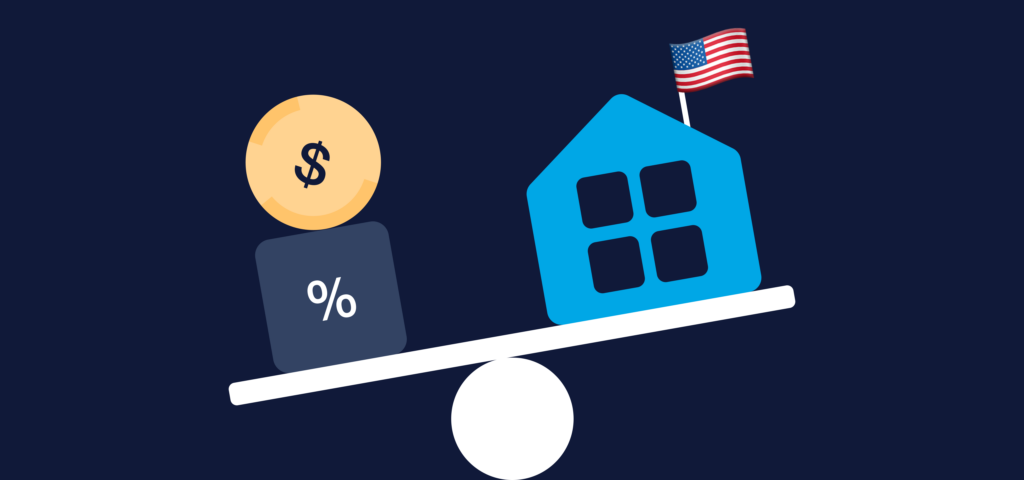Whether you’ve recently purchased a rental property or have owned one for several years, one thing’s for sure: it’ll gradually lose value from day-to-day use. This reduction of your rental’s value from wear and tear is called depreciation.
The good news is you can claim rental property depreciation as a tax deduction. In this guide, we’ll explore how rental property depreciation works and how it saves you money on your taxes. Remember to consult with a tax professional who specializes in real estate when it’s time to file your taxes.
What is rental property depreciation?
Rental property depreciation is a method for distributing the cost of purchasing and improving a rental property over its useful life. A rental’s “useful life” is the estimated time it will remain active as a business asset to generate income.
Once you calculate the amount of depreciation your property incurs each year, you can claim it as an expense on your tax return to offset your rental income.
As a landlord, you’ll incur various costs in purchasing, managing, and enhancing your property. So, deducting these costs as compensation for your investment is only fair and logical. And that’s precisely what the Internal Revenue Service (IRS) allows you to do by letting you expense them over a set number of years.
The cost of land and routine maintenance
There are two key points to note about rental property depreciation.
First, you can’t claim depreciation on land, as it doesn’t degrade or become obsolete over time. Only the building and its various structural components, like heating systems, electrical wiring, and water pipes, are eligible for depreciation.
Second, routine repairs are not a depreciable expense, as they don’t substantially increase the property’s value or extend its useful life. An example would be fixing a leaky faucet. You would deduct the total cost of this activity in the tax year it was completed rather than spreading it over several years.
How do I calculate depreciation on my rental property?
Below are the steps for determining depreciation on a residential rental property in the United States.
Step 1: Determine your property’s cost basis
The cost basis is the total amount you spent to acquire your rental property. Start with the amount you paid to the seller to purchase the property. As mentioned, land is exempt from depreciation, so be sure to exclude it from your calculation.
Next, add all eligible closing costs involved in the purchase (but only the portion that applies to the building), which include:
- Legal fees
- Recording fees
- Surveys
- Transfer taxes
- Title insurance
- Utility installation fees
- Abstract fees
You can also include in your cost basis the amounts you agreed to pay when you purchased the property, such as the seller’s property taxes, back interest payments, and real estate commissions.
Finally, add to your cost basis any money you invested in additions or improvements after purchasing the property to get it ready for service. These additions or improvements must have a useful life of more than one year.
Using the cost basis formula
Here’s an example to illustrate the cost basis calculation:
You buy a detached home for $500,000. The land is valued at $100,000. Your closing costs are $6,500, and 80% of those costs are related to the building. After acquiring the property, you invest $30,000 in remodeling.
In this case, your cost basis is $435,200 ($500,000 – $100,000 + ($6,500 x .80) + $30,000). This amount is eligible for depreciation.
Step 2: Choose your depreciation method
There are two methods to calculate allowable depreciation: the General Depreciation System (GDS) and the Alternative Depreciation System (ADS).
With the GDS, depreciation costs are spread over 27.5 years, which the IRS has defined as the lifespan of a residential rental property. Under the ADS, you’ll claim depreciation over 30 years (or 40 years if your property was available for service before January 1, 2018).
In most cases, GDS is suitable for most residential rental properties. However, depending on certain characteristics of your rental unit and how you intend to use it, the IRS may require that you use the ADS method.
Step 3: Divide the cost basis by the property’s useful life.
The next step is to figure out how much depreciation you can claim each year on your tax return. To do so, divide your cost basis by your property’s useful life, which will likely be 27.5 years.
Continuing with our previous example, let’s use a cost basis of $435,200 and divide it by 27.5 years. Your allowable depreciation expense is $15,825.45 annually, which works out to be 3.64% of your property’s total cost.
Step 4: Determine the amount of depreciation you can claim on your tax return
During the first year of operations, you can claim depreciation only during the months your rental property was in service.
Let’s assume your rental was available to accept tenants on February 8. Refer to this guide from the IRS to help calculate your depreciation deduction based on the month it was ready for use (see Table 2.2d on page 17). For February, the depreciation percentage is 3.182%.
Continuing with our example, the depreciation deduction for Year 1 of your rental would be $13,838.14 ($435,200 x 0.03182). You would deduct the regular annual amount of $15,825.45 for all subsequent years.
What are the benefits and drawbacks of rental property depreciation?
Rental property depreciation can go a long way in lowering your taxable income. You can apply this expense against your rental income for many years, allowing you to recover a sizable portion of the money you spend to keep your rental in top shape.
However, despite the tax breaks, rental property depreciation has a few drawbacks.
First, calculating depreciation can be tedious. There are more nuances to this area of tax law than we’ve covered in this article. It’s easy to get overwhelmed and make errors, especially if you own multiple rental units.
That brings us to our second point. Given the time and complexity involved in calculating and tracking depreciation, you may have to hire an accountant or other tax specialist to assist you. Outsourcing this task results in another expense that takes away from your profit.
A third, and frequently overlooked, disadvantage of rental depreciation is depreciation recapture, which may occur when you decide to sell your property. If you earn more from the sale of your rental than you originally paid for it, you may face a steep tax bill, as your gains will be taxed as regular business income.
Our final thoughts
There’s no escaping the effects of wear and tear on your rental property. Luckily, you can obtain some financial relief by claiming these costs as depreciation on your tax return. Be aware there are strict rules that limit how much you can deduct and which costs don’t qualify, so consider hiring a tax expert to help you. For more information, explore this resource from the IRS on how to depreciate property. To simplify tasks like expense tracking and long-term budgeting, explore our finance management resources for landlords.


